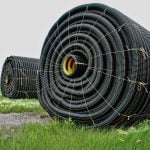A 10 per cent rise in grain freight revenue over 2007 levels helped offset Canadian National Railway’s (CN) first-quarter costs from the rising loonie, poor winter weather, reorganization and a conductors’ strike.
The railway on Monday posted net income of $311 million on $1.93 billion in revenue for its Q1 ending March 31, down from $324 million on $1.91 billion in the year-earlier period.
The railway’s grain and fertilizer freight business posted a 10 per cent gain in Q1 revenue at $340 million, topped only by intermodal (12 per cent) and coal (11 per cent).
Grain and fertilizer carloads hauled during the quarter were up seven per cent at 151,000, leading to a three per cent increase in grain and fertilizer freight revenue per carload at $2,252.
Read Also

Feed Grain Weekly: Barley, wheat swinging upward
Prices for feed grains on the Canadian Prairies have “started to rebound a little bit,” said Matt Beusekom, trader with Market Place Commodities in Lethbridge.
Offsetting those revenues were costs such as U.S.-to-Canadian dollar conversions (estimated at $30 million), a Canadian conductors’ strike ($35 million), reorganization costs for a CN subsidiary, and weaker markets for sectors such as forest products.
On top of that, CEO Hunter Harrison said in a release, the company ran up against “some of the worst winter weather in decades” during Q1.
“Extreme cold and snow affected us system-wide — particularly in Western Canada — delaying trains and putting crews, cars and locomotives out of cycle. In January we took the unprecedented step of suspending most operations in the West for almost two days to ensure the safety of our employees.”















